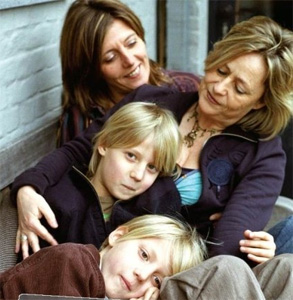Had it not been for the violent uprising at the Stonewall Inn back in 1969, New York would be a completely different place. Gay culture would be completely underground. Homosexuals would be arrested as criminals. Chelsea would have a lot fewer gyms.
But everything changed that June 28 when cops raided the Christopher Street bar and the fed-up patrons fought back, launching the modern gay-rights movement. The riots are chronicled in the new documentary “Stonewall Uprising,” opening Wednesday.
For those raised on Culture Club videos and “Will & Grace,” it’s hard to imagine how underground the gay scene was back in the ’60s — even in freewheelin’ New York.
FRED MCDARRAH/GETTY IMAGES
The new documentary “Stonewall Uprising" opens Wednesday.
“A bar could be closed for serving a known homosexual,” says Danny Garvin, who participated in the riots and appears in the film. “I was in a bar called Julius’ one night having a beer, and I was standing, resting my elbows on the bar and just looking. The bartender tapped me on the shoulder and said, ‘Could you please turn around and face the bar. Otherwise, we could be closed for soliciting.’ You had to be cautious.”
Because serving homosexuals was illegal, almost all gay bars were run by the Mafia, including the Stonewall, which was controlled by the Genovese crime family.
Speaking of criminal, at the time, dressing in drag was also forbidden. The law stated that men were required to wear at least three articles of masculine clothing.
“You could get away with [male] underwear and an undershirt, but after that, it was a problem,” says Martin Boyce, who used to dress in drag and also participated in the riots. He also appears in “Stonewall Uprising.”
Back in the ’60s, the city didn’t offer many places for gay men to congregate, and one of the centers of the underground gay scene was a group of tractor-trailers parked at the end of Christopher Street. They were empty and left unlocked at night, and dozens of men would pack into them to have sex.
“I was across the street one time, and the police came by and banged on the truck with their sticks,” Boyce says. “And I hate to say it, but it looked like roaches were coming out.”
The police would also frequently raid gay bars, often confiscating the liquor and forcing revelers to line up and show ID. Anyone who didn’t have it could be arrested.
It was during one of these routine raids on the Stonewall that violence erupted. Shortly after busting the bar, cops were forced to barricade themselves inside as hundreds of angry protesters gathered on outside Christopher Street, throwing pennies, bricks and trash. One angry drag queen uprooted a parking meter and began bashing in the door, while another doused the door with lighter fluid and set it on fire.
“You could see the eyes of the police through a hole in the door, and there was a heightened sense of alarm,” Boyce says. “At first they were smiling, but they weren’t smiling when the door caught on fire.”
Police eventually called in reinforcements. As cops tried to clear the streets, Boyce and a group of other drag queens locked arms and formed an impromptu kick line, singing, “We are the Stonewall girls/ We wear our hair in curls/ We wear our dungarees/ Above our nelly knees!”
“We had to do something to them,” Boyce says of the police. “Finally, it was our turn to just do something.”
The unrest continued for four more nights. No one involved knew it at the time, but the incident had changed things in the gay community forever.
“That week in the street, there were a number of people who cheered me,” Boyce recalls. “I remember one day a sanitation worker said, ‘All right! ’Bout time you guys did something!’ I was shocked.”
A year later, in 1970, a pride parade was organized to commemorate Stonewall. It’s now an annual event, with this year’s march scheduled for June 27.
As for the Stonewall bar, it’s still there — only it occupies half of its former space. According to Boyce, it’s not all that popular anymore.
“It’s like going to see the Paris that you read about in the ’30s. It’s kind of dull,” he says. “It doesn’t have a reason anymore. It just has a memory.”



